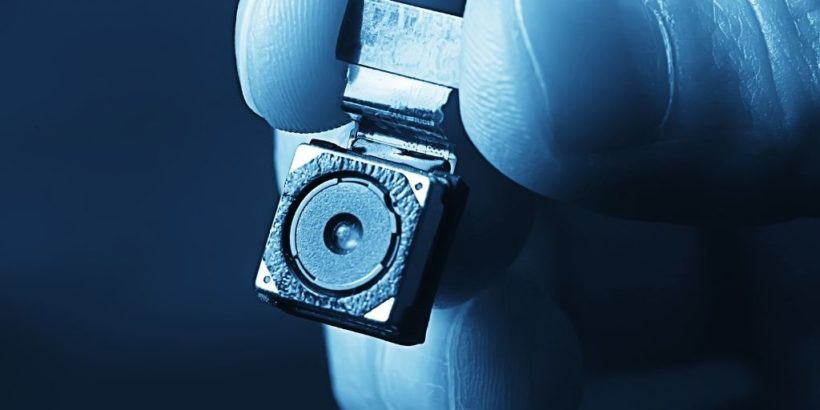For most people, the idea of finding a hidden camera in your hotel room or Airbnb room is pretty horrifying.
Upon finding one, a million anxiety-inducing questions would fly through your head like who placed this camera here, where is the footage streaming, and what should I do?
The good news is there are several steps you can take to minimize the odds of you getting spied on by a hidden camera in a hotel room.
Below, I’ll talk about how common it is to have hidden cameras in hotel rooms, and give you some specific tools for how to detect hidden cameras along with the best places to look .
You’ll also see some real life examples of what these hidden cameras can look like.
Table of Contents
Have cameras actually been found in hotel rooms?
Yes, although not a regular occurrence, there are quite a few reports of guests finding hidden cameras in hotel rooms and also in Airbnb lodging over the years.
Tip: Use the free app WalletFlo to help you travel the world for free by finding the best travel credit cards and promotions!
Who would put a camera inside a hotel room?
If a camera was ever placed in your hotel room odds are it was not by the hotel. Hotels in the US would typically shudder at the idea of monitoring their guests in their rooms due to liability concerns.
Most likely if a camera is found in your hotel room it was placed by a rogue employee, guest, contractor, or by someone who gained access via some back door method just sneaking around. But bugs could also be placed by government agencies, militaries, or investigators depending on the country.
Is it common to have hidden cameras in hotel rooms?
Your average traveler probably does not have too much to worry about in terms of getting recorded in a hotel room. Could it happen? Sure, but it would probably be pretty rare.
The odds of someone trying to record you likely increase as the leverage against you increases.
If you are someone in the public eye someone might be more likely to record you in a hotel room. They may have the intention to sell the footage and make a buck or perhaps even blackmail you.
Tip: If you suspect someone might be tracking your travels one trick is to immediately request a room change when you are assigned your room at check-in.
For Airbnb, it seems the concern for cameras would be heightened because the hosts would have so much more access and time to install hidden cameras. They also wouldn’t be subject to the same inspections that some hotels have to go through.
For those reasons it’s not terribly surprising that 1 in 10 survey respondents indicated they have found a hidden camera in an Airbnb. And if you look for the new stories of people finding hidden cameras in vacation rentals you will find them over and over again.
Airbnb does have a policy that allows cameras in certain areas of the lodging but they have to be disclosed and visible:
Their policy states:
You should not spy on other people; cameras are not allowed in your listing unless they are previously disclosed and visible, and they are never permitted in private spaces (such as bathrooms or sleeping areas). You should not access others’ accounts without authorization or violate others’ privacy, copyrights, or trademarks.
According to the Washington Post, Airbnb claims that incidents with hidden cameras in vacation rentals are rare.
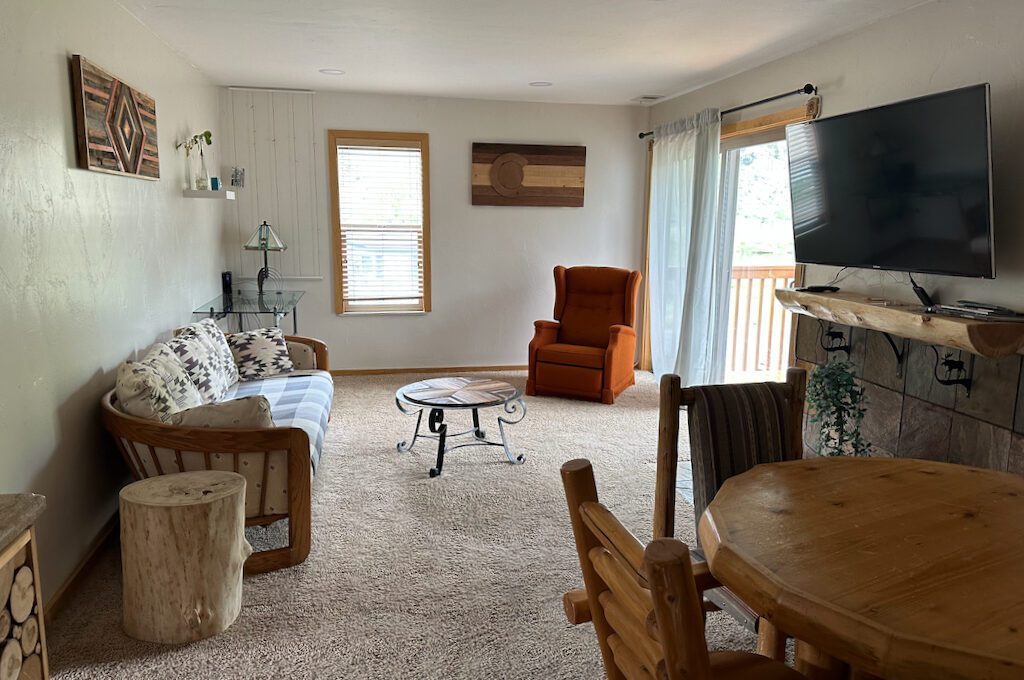
How to tell if there is a hidden camera in your hotel room
If a truly experienced and sophisticated professional criminal is trying to record you with a hidden camera, trying to find that camera could be extremely difficult (at least it would be for your average traveler).
But if your “average creeper” is trying to set something up to record you in a hotel room or Airbnb, there are a few methods that could detect a camera pretty easily.
These include:
- Using a flashlight to look for camera lens reflections
- Using a camera phone and/or app to look for infrared light
- Scanning your wifi network for suspicious devices
- Using camera lens detectors
- Using thermal imaging cameras
- Sweeping the room with an RF detector
- Making a phone call and looking for interference
Use a flashlight to look for camera lens reflections
One of the easiest ways to search for hidden cameras would be to use the flashlight from your cell phone.
You can turn all of the lights off in the room and then use your flashlight to scan electronic items like alarm clocks and the items mentioned in the list below to see if you can detect any type of suspicious lens reflections.
The reflections may differ based on the type of camera used but it may look something like a bluish or purpleish tint. Check out the picture found in this article for an example of what the reflection would look like.
A couple of tips when doing this:
- If you can enable a flash or strobe mode that might make it easier to see reflections but it kind of depends on how best your eyes work.
- Make sure to view the object from multiple angles to get the right reflection (scanning for hidden cameras can be very time-consuming).
- Some people use a toilet paper tube to focus the light in order to better make out the reflections.
Use your phone’s camera
Depending on the type of phone that you have, you can use your phone’s camera to help you detect hidden cameras.
One way to do this is to use it to detect infrared light. Some cameras rely on infrared light to record in the dark. The naked eye will not pick up on infrared light but your smart phone camera usually can.
So you can turn off all the lights (trigger the infrared light) and then scan suspicious items with your phone while looking for IR LED lights.
Sometimes you might have to use the front facing camera to get it to work, but I used my iPhone 13 Pro Max and tested its ability to pick up infrared light on a remote control and both cameras picked it up easily. You could also use an app like Hidden Camera Detector to help you.
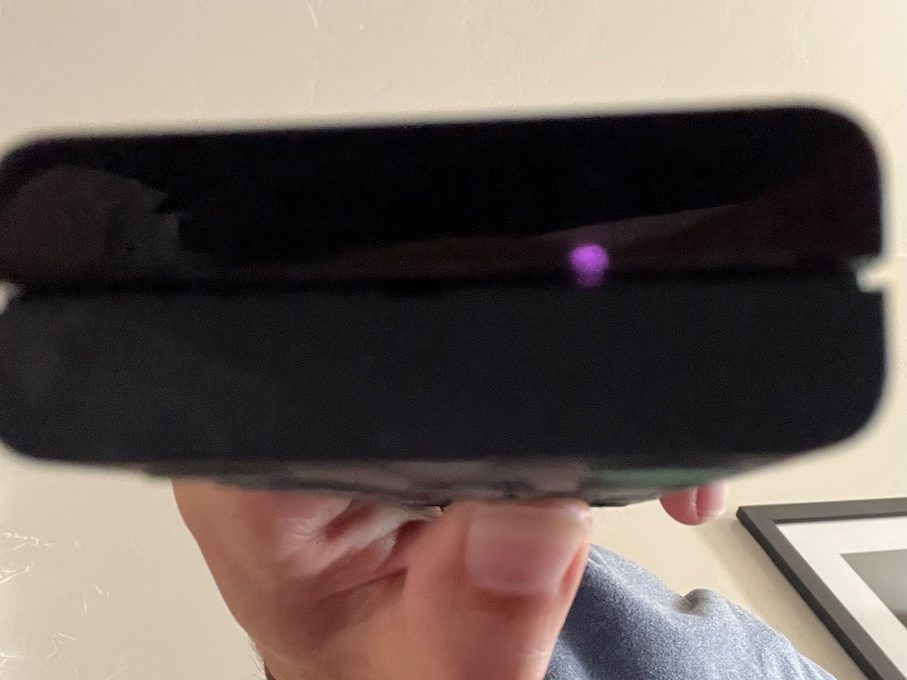
Scanning your wifi network for suspicious devices
You can use an app like Fing to scan your Wi-Fi network and potentially discover hidden camera devices on the network. Hidden cameras won’t always show up but this can be a way to go after the low hanging fruit as a first line of defense.
If you come across a device on your Wi-Fi network with a strong signal that you can’t identify, there’s a chance that that could be something worth looking into.
Download the Fing app on the App Store or Google Play.
Camera Lens Detectors
There are special devices that you can look through to find camera lenses. Instead of using your flashlight, you can use these devices and you’ll be able to pick up on green or red dots where these camera lenses are.
A quick (but important) word about these devices and all of the other devices mentioned in this article.
There are a lot of products being sold online, including on marketplaces like Amazon, that don’t necessarily scream high-quality. Also, some of these counter-surveillance gadgets require some training and specialized knowledge to use them properly.
I would be careful about investing lots of money for these devices unless you are able to get some high level of assurance that they work and that you will know how to use them. (Look for lots of solid real customer reviews.)
Thermal Imaging Cameras
Thermal imaging cameras can also be used to pick up on hidden cameras and other electronics.
Hidden electronics may emit extra heat and the idea is that a thermal imaging camera will pick up on that additional heat.
It could be difficult to detect certain items if they are built into larger items that emit a lot of heat. Also, you have to think about how small and energy-efficient these hidden cameras can be, so thermal imaging might not be the best route to go unless you really know what you are doing with the equipment.
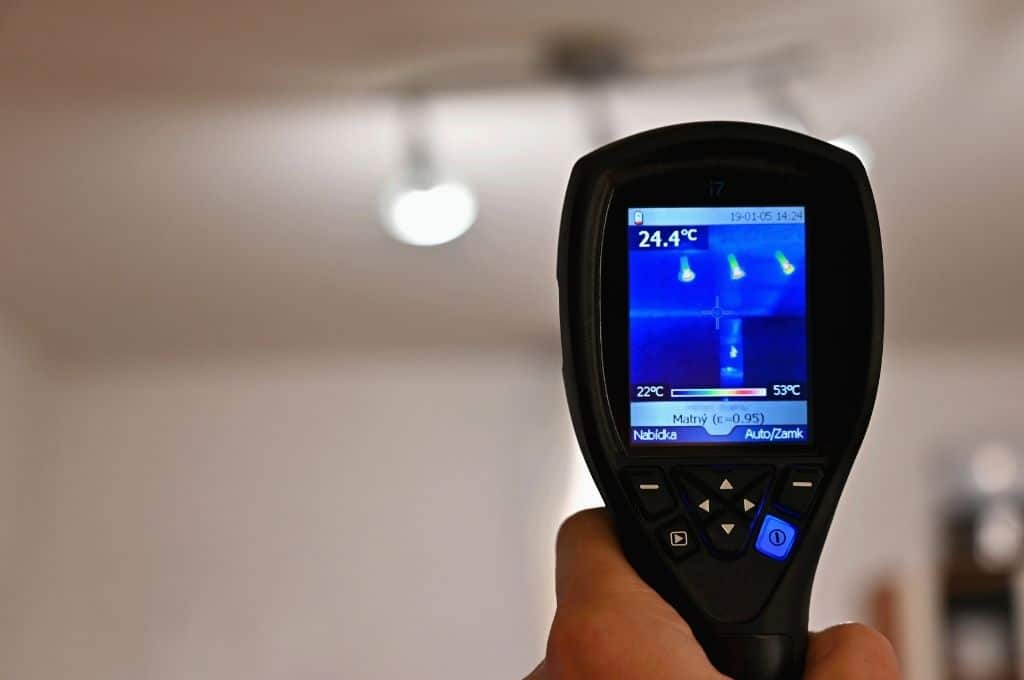
Sweep the room with an RF detector
If there are cameras streaming the recording you can pick up on these with an RF (radio frequency) detector. RF detectors can find bugs, GPS trackers, hidden cameras, eavesdropping devices, and more.
You will want to turn off all of the electronics in your room that could be sending out radio signals in order for this to work best. False positives can be an issue with an RF detector.
You also have to keep in mind that some hidden cameras store the video on a local drive and do not stream.
If you go on Amazon or shop online you will see a lot of RF detectors. Unfortunately, a lot of them do seem like BS or at least pretty faulty so use your best judgment before buying one of these devices.
There are some phone apps that reportedly do this but if you check the reviews a lot of times you will see a lot of unsatisfied users, so I’m very suspect of those.
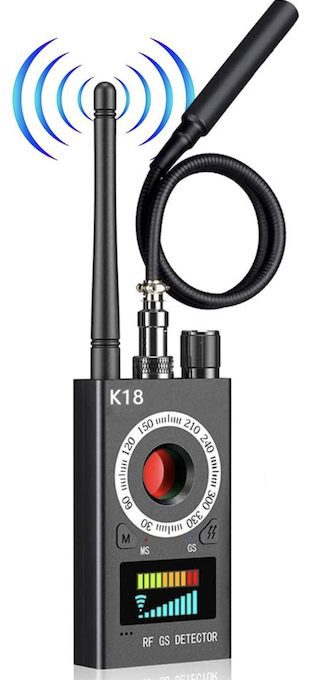
Make a phone call and look for interference
Electromagnetic radiation from your cell phone could be interfered with by electromagnetic activity from hidden cameras.
So something that you can do is to make a phone call from your cell phone in your hotel room and walk around your room to see if there are any areas that cause interference. If that does happen then you may want to inspect that area closer for hidden cameras.
Just be sure that all electronics are turned off like laptops, TVs, etc. when doing this.
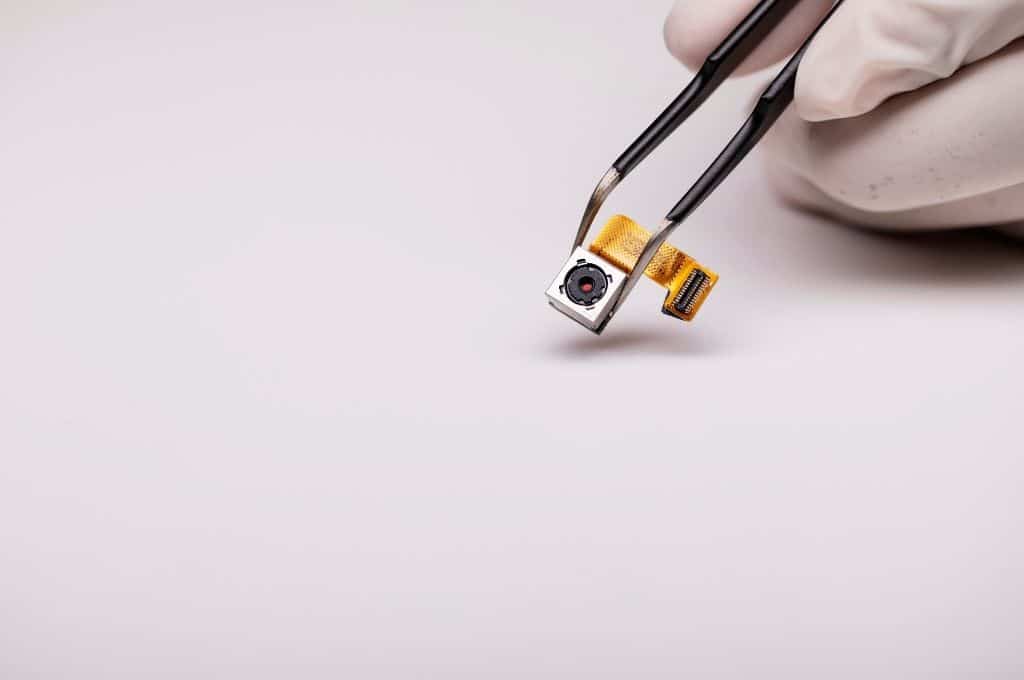
Where to look for hidden cameras
Unfortunately, after doing a ton of research on hidden cameras in hotel rooms, it occurred to me that hidden cameras could be placed virtually anywhere.
Essentially, any object that could conceal a tiny black dot and that has a line of sight from that location is an ideal candidate for a hidden camera.
And if you think about all of the items in a hotel room, there are seemingly infinite objects that could fit that description.
Still, it helps to have an idea of the common places to look and what these hidden cameras might look like in practice.
Peephole
The peephole to your hotel room door could be used as a way to spy on you. This is known as a “reverse peephole” and this is the way that Erin Andrews was filmed with a cell phone through a peephole by a stalker while staying at the Nashville Marriott in 2008.
To give you a sense of the magnitude of these cases, she ended up receiving a $55 million judgment with about half of the blame being apportioned to the hotel, and the perpetrator had to serve 2.5 years in federal prison for the offense.
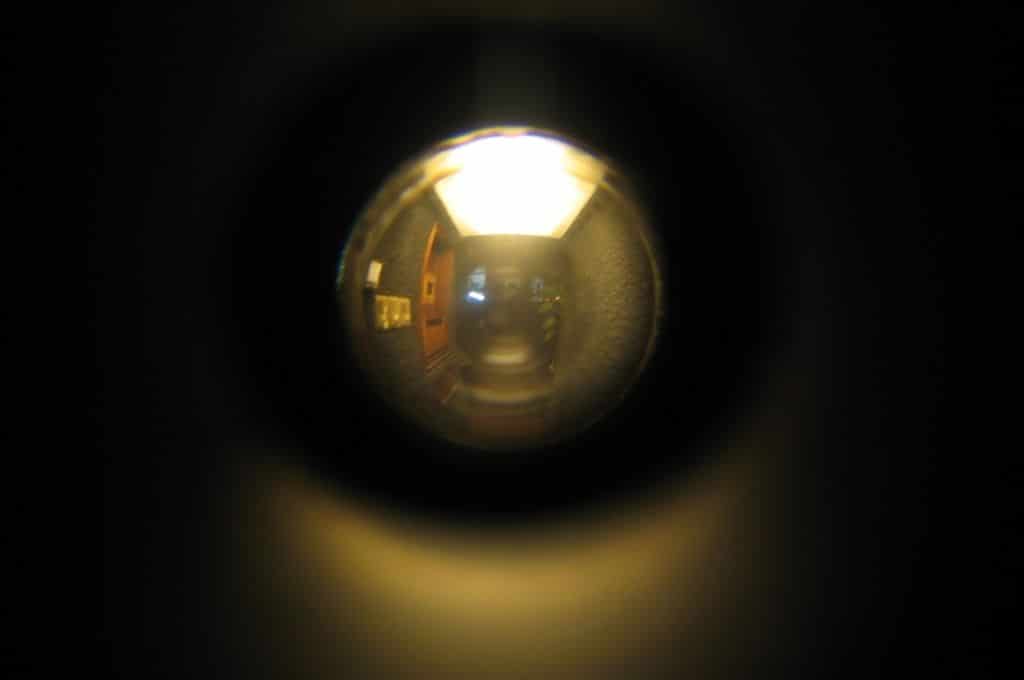
Alarm clock
Alarm clocks are perfect devices for hiding cameras because they have a dark screen panel that could easily conceal a camera. This is the type of screen that you could use a flashlight on to detect a reflection from the camera lens.
Smoke detector
Another one of the most common devices for a hidden camera is a smoke detector.
These are ideal because they have a wide field of view from the ceiling and are far enough away from most guests that the camera lens will not easily stick out.
Also, a lot of smoke detectors have little spaces and holes in them that would not cause someone to give them a second look. The infrared reflection test would be a good way to find cameras in smoke alarms.
Fan
The fan in a hotel room is another optimal spot for a hidden camera in terms of the vantage point. This could be really difficult to detect because the small black dot of the camera lens could be tucked away into the crevices of the fan, up high on the ceiling.
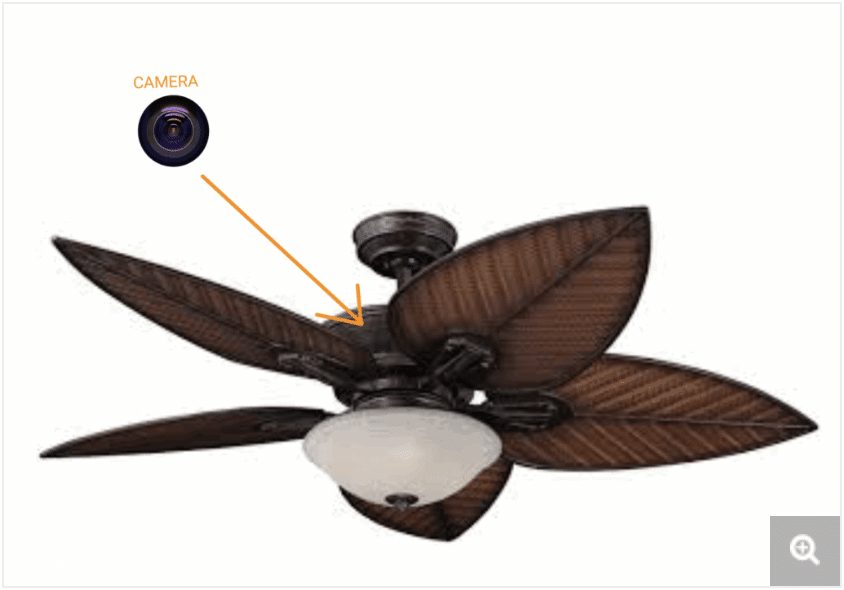
Clocks
Hidden cameras in wall clocks also have good vantage points and can easily be hidden. The small dot for the camera lens could be found in one of the numbers on the clock or in one of the graduations.
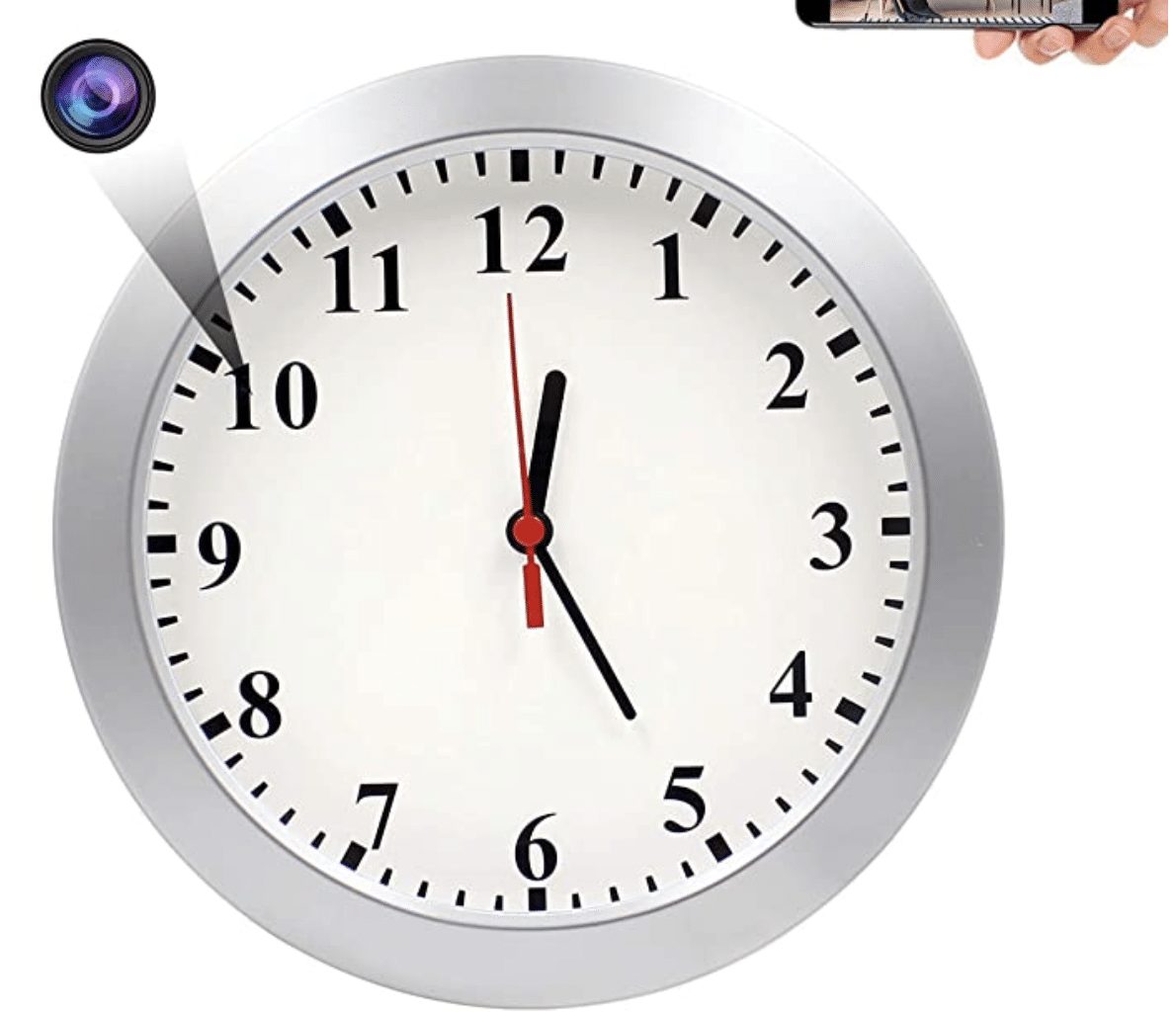
Tissue boxes
If you see anything other than a standard cardboard tissue box there could be a hidden camera lurking inside. This is especially true if the tissue box is a darker color that could easily conceal a black dot.
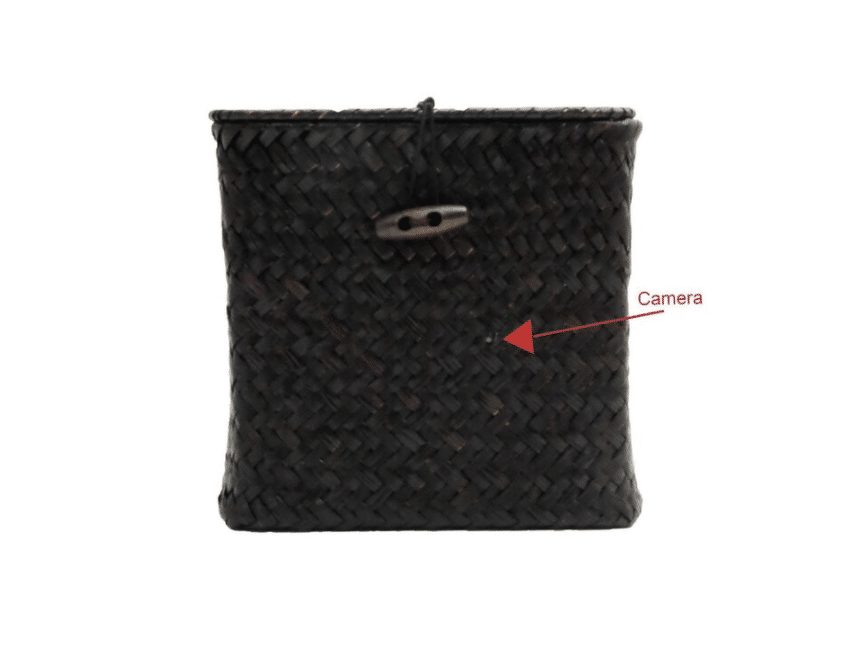
Hair dryer
Hidden cameras have been used in hairdryers in places like South Korea. Their location in the bathroom make them an ideal candidate for those perpetrators looking for maximum violation of privacy. Vents above the shower could also be an area of concern.
Power outlets
A common location for hidden cameras is in power outlets. You could look for a little dot in the middle of the outlet but the cameras could also be placed in screws/nails or even in the outlet hole.
In addition, power adapters or power strips also could contain hidden cameras. If you enter a hotel room with a dark power adapter or power strip already plugged in that might be something to look into.
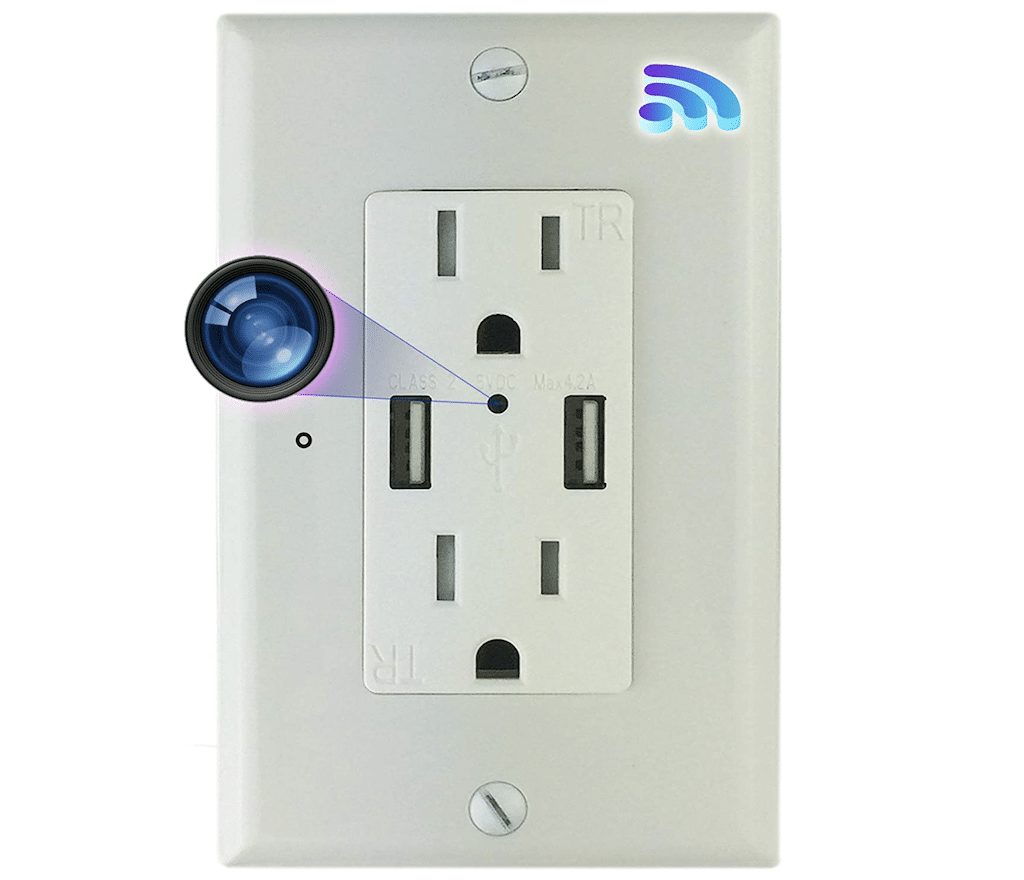
TV screens/consoles
If there are consoles attached to the TV these are advantageous spots for hidden cameras. They are often dark and tucked away, making it difficult for the camera to be visible. Some of these are also placed at good heights for optimal viewing.
Workstations
Some hidden cameras are placed to retrieve sensitive data or information such as login credentials or browsing history.
These would likely be placed in a position facing a desk or workstation in a hotel room so you could look for places that would be optimal for that.
These type of cameras might be more common in countries known for surveillance such as China and Russia.
Coffee pots
Hopefully, you are not someone who uses hotel coffee makers on a regular due to the potential buildup of bacteria and other harmful germs that they can have.
But regardless of whether you are or not, coffee makers could be another great spot for a hidden camera.
They generally are dark and have different crevices and buttons that could conceal a small camera.
Hotel safe
A hotel safe would not be the ideal spot for a hidden camera because they are often talked away in closets or drawers.
But there could be savvy criminals who rely on cameras in order to capture your safe combination or to simply see what valuable contents are being deposited into the safe.
Air conditioning vents
A lot of people never look twice at an air conditioning vent and given their high vantage point, they are another perfect location. The hidden camera could be located in one of the “screws” or perhaps even stuck behind the vent.
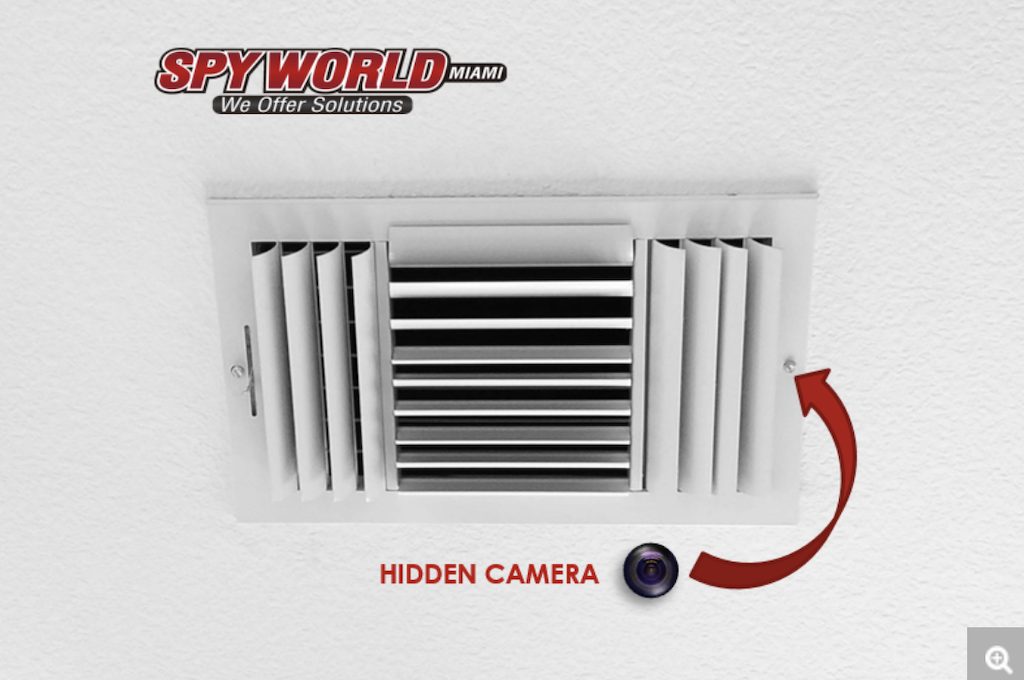
Mirrors
You’ve probably heard of two-way mirrors before. These are mirrors that allow you to view your reflection but also allow someone on the other side (or a camera) to view you from behind the mirror.
One of the most common ways to detect these is to do the “reflection test.” Some people also call it the fingernail test. Basically, you put your finger up to the mirror and if it is a regular mirror there should be a gap between your finger and the reflection of your finger. If there is no gap then this could be a two way mirror.
The thing to note is that there are different types of two-way mirrors that use different substances (e.g., glass vs acrylic) and this test may not always be super reliable.
Another method for checking for two way mirrors is to use the flashlight method. Basically you put a flashlight such as one from your phone up to the mirror and if you can start to see through it that could be a two way mirror.
And finally, you can use the mirror method where you compare the color of a real mirror like one from your purse with the color of the wall mirror. If the color or tone looks off that could be another sign of a two-way mirror.
You can check out how these methods actually work in this video.
Picture frame
Hidden cameras may also be hidden in picture frames. If you see or any designs on a picture frame, especially with little dots, that could be a good spot for a camera to be hiding. Others may just be stuck in a black frame.
You can also look to see how the frame is being positioned and if it looks like it is being displayed in a particular way to capture the room that could be a sign of a hidden camera.
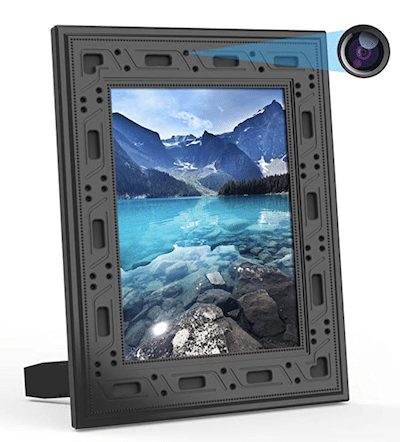
Plants
Plants are good spots for hidden cameras because they usually have bushy, dark areas where something could be tucked away and easily hidden.
Objects that look out of place
If you notice objects that look out of place, that could be a sign of a hidden camera.
Knowing what feels “out of place” could take a lot of experience in counter-surveillance. But in some instances it could just be something like a large adapter or small piece of decoration that just doesn’t look quite like it belongs.
You also might find something like unexpected loose wires, oddly placed appliances, suspicious holes, and unusual marks on walls or ceilings.
Also, if you were to spot blinking lights that could be a major red flag.
Airbnb tip
If you are staying in an Airbnb one tip is to consider turning off the Wi-Fi as soon as you arrive.
If you were to get a text message or call from the owner about the Wi-Fi being out, that could be a sign that they have cameras set up. And if those cameras were not disclosed to you during your booking that would be a major problem.
The danger of checking for security cameras
When visiting some countries you may actually not want to go snooping around your room for hidden cameras.
In countries known for business espionage and/or surveillance like Russia and China it could end up bad for you if you were caught trying to detect hidden devices. The government in those countries could suspect you of being a spy or up to some other type of shady activity.
In fact, some counter-surveillance gadgets could even be illegal so always do your research before bringing those along with you on international trips.
Security cameras
Security cameras are an altogether different matter.
You can often find security cameras in various places in hotels including: the lobby, hallways, elevators, the pool, the gym, and outside areas such as the parking lot. And if you were at a hotel casino you will most definitely find more hidden cameras in places like the casino area.
A lot of times security cameras are not hidden but sometimes they are a bit disguised or tucked away in corners.
If your hotel room has a large balcony be aware that some cameras on the exterior of the property could be looking down at your balcony! We actually encountered this when staying at the Outrigger Resort in Hawaii.
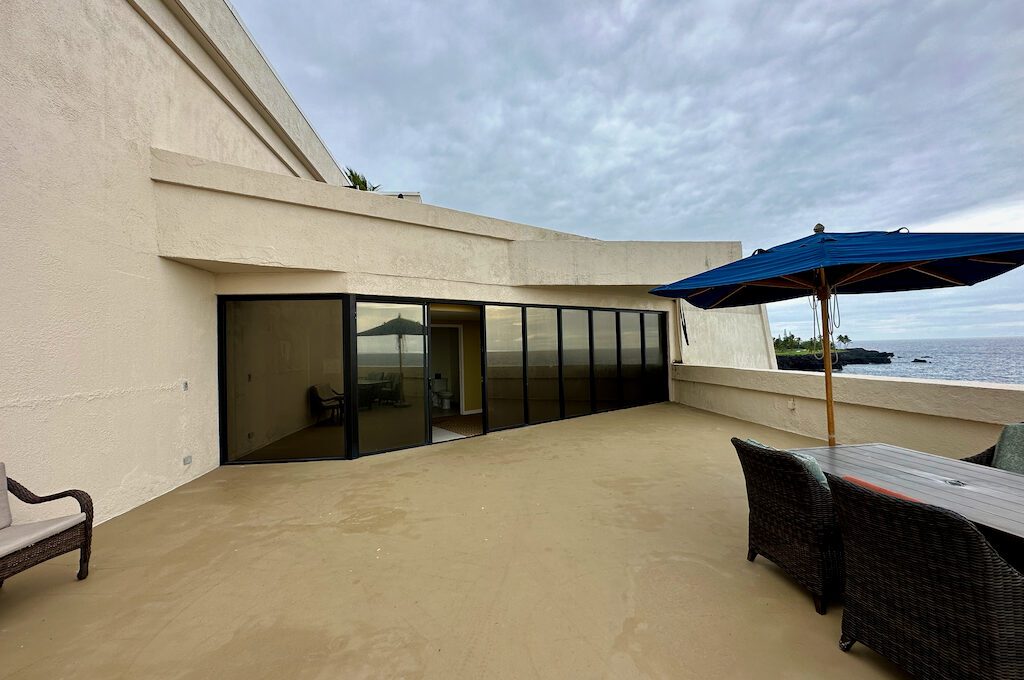
What to do if you find a camera inside your hotel room
If you find a camera in your hotel room there are basically two recommended options.
First, you want to contact the police. Most likely they will arrive and you can file a police report and allow them to launch an investigation and hopefully track down the perpetrator. Try not to tamper with the evidence since you could affect their investigation.
The next option is to contact hotel management. If for some reason you suspected that the hotel/property owner was in on it then you obviously would want to go to the police first. Most likely, the hotel will be stunned to find out that hidden cameras have been placed in the room.
What is the law on cameras inside hotel rooms?
Not every state seems to make it 100% illegal to have cameras in different areas of hotel rooms and sometimes this falls into a bit of a gray area. Of the 50 states, only 16 have created laws surrounding the use of video surveillance. Still, most rules that I’ve seen require consent for people to be recorded when within private spaces.
Final word
At the end of the day, it would probably be a pretty rare occasion for you to encounter a hidden camera in your hotel room or even an Airbnb. If you follow the steps outlined in this article you should be able to detect hidden cameras placed by less professional folks.
But because there are so many different types of devices that can be used and so many different ways to hide them, it’s really difficult to ever fully rule out the possibility of hidden cameras being in a room.
So a good idea is to not engage in certain activities outside of your house that you think could open you up for blackmail, public embarrassment, etc.
Daniel Gillaspia is the Founder of UponArriving.com and the credit card app, WalletFlo. He is a former attorney turned travel expert covering destinations along with TSA, airline, and hotel policies. Since 2014, his content has been featured in publications such as National Geographic, Smithsonian Magazine, and CNBC. Read my bio.

